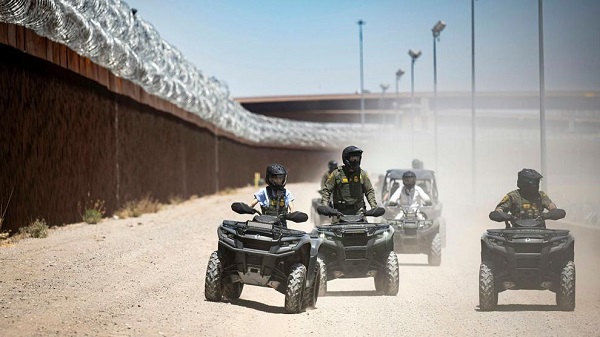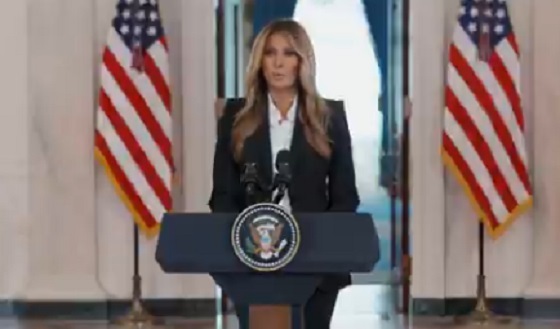Opinion
Nova Scotia’s forest access ban goes too far

This article supplied by Troy Media.
Want to take a walk in the woods in Nova Scotia? It will cost you $25,000
It’s been a hot summer in Canada this year. Several provinces have struggled with the extreme heat wave and high-pressure buildup during July and August. This has opened the door to warnings of extreme fire danger, and more specifically, wildfires.
This has certainly been the case for Atlantic Canada. “Hot temperatures and a relative lack of precipitation may allow any blazes that spark to quickly grow out of control,” The Weather Network noted on Aug. 9. “Province-wide fire bans are in effect for New Brunswick, Nova Scotia, as well as
Newfoundland and Labrador. A regional state of emergency has also been declared for a portion of the Bay de Verde peninsula, from Bristol’s Hope to Whiteway, due to out-of-control wildfires.” That’s why Atlantic Canadians are being understandably cautious during this high level of fire
danger. Alas, one provincial government in the region has gone completely overboard in its response to wildfire season. It will be penalizing individuals for deciding to take—wait for it—a walk in the woods.
As crazy as that may sound, it’s completely true.
Nova Scotia Premier Tim Houston and his Progressive Conservative government announced on Aug. 5 that there would be several restrictions related to “travel and activities in the woods because continued hot, dry conditions have greatly increased the risk of wildfires.” (This would fall under the purview of the provincial Forests Act.) No one would be allowed to hike, camp, fish or use vehicles in the woods, for instance. Trail systems through the woods would be “off limits.” As for camping, it would only be allowed “in campgrounds.”
Here’s the kicker. “These and other measures are in place on provincial Crown and private land until Oct. 15 or until conditions allow them to be lifted. The fine for violating the restrictions is $25,000.”
Yes, you read this correctly. There could be a massive fine for taking a walk in the woods, among other things.
Terry Newman, one of my colleagues at the National Post, correctly suggested the Houston government’s decision was “obsessive” in an Aug. 6 post on X. She was born and raised in Nova Scotia, and her point of view obviously has credence.
Here’s what I wrote in response that day: “Agreed. Being cautious due to dry conditions and possible wildfires makes sense. Banning walking in the woods, and threatening penalties of $25,000 per incident, is beyond the pale.”
My X post went viral for a few days and elicited various responses on the left and right. The fact that some people got triggered over a straightforward comparison between common sense and strong opposition to government interference tells you something. Based on what we all just experienced a short number of years ago, it’s clear that some Canadians haven’t learned any lessons.
Others perceived the same thing that I did. “The justification for this COVID-esque forest quarantine is the threat of fire,” wrote another National Post colleague, Jamie Sarkonak. “Nova Scotia’s forest bans predate the COVID years, but the similarities are clear, and that’s probably why so many onlookers have their hackles up. During the pandemic, the public was put under extreme restrictions on movement to control the spread of what turned out to be a not very dangerous virus. Authorities erred on the side of control and risk reduction, likely because they lacked the competency to properly assess risk, and because the health care system was on thin ice.”
I completely agree. Although the two events are obviously different, Houston and the PCs are replicating the ill-advised strategy used during COVID-19 that gradually frustrated many residents in their province, and in all provinces. The Nova Scotia government will argue that its wildfire strategy and ban are being done out of a pressing need for safety and caution in their communities. They’ll suggest it has plenty of support across the province. In reality, it’s a massive overreach that puts each individual’s freedoms and liberties at serious risk. Following the lead of a political pied piper is never the right strategy to take.
The $25,000 fine is rather obscene, too.
The premier’s supporters will argue that it’ll serve as a significant deterrent to people from acting foolishly and irrationally during the extreme fire weather warning. If the province resembles a “tinderbox” (a word that has been used by talking heads over and over again), then they believe it should be protected at all costs. Besides the fact that it’s really not the government’s role to protect citizens from themselves in this fashion, it also doesn’t need to resemble an ATM or collections agency. As Sarkonak pointed out, the province’s Forests Act “was triggered previously in 1997, 2001, 2016 (back then, the fine was $180) and 2023. In 2025, they’ve done it again, this time with a fine as expensive as a Hyundai Elantra.”
How is this amount justified, exactly? It’s not. The type of government interference we’re witnessing in Nova Scotia is foolish, unprincipled and potentially dangerous. Unfortunately, I don’t believe the province fully sees, agrees with and recognizes the potential political and economic damage they’ve set themselves up for.
Maybe we need to light a fire under them to bring back some level of sanity and rational thinking on this issue before summer’s out.
Michael Taube is a political commentator, Troy Media syndicated columnist and former speechwriter for Prime Minister Stephen Harper. He holds a master’s degree in comparative politics from the London School of Economics, lending academic rigour to his political insights.
Troy Media empowers Canadian community news outlets by providing independent, insightful analysis and commentary. Our mission is to support local media in helping Canadians stay informed and engaged by delivering reliable content that strengthens community connections and deepens understanding across the country.
illegal immigration
$4.5B awarded in new contracts to build Smart Wall along southwest border

Homeland Security Secretary Kristi Noem rides an ATV along the U.S.-Mexico border wall in El Paso, Texas, on April 28, 2025. Photo: Tia Dufour / U.S. Department of Homeland Security
From The Center Square
By
New contracts to add 230 miles of barriers, nearly 400 miles of technology
Roughly $4.5 billion in contracts have been awarded to expand border wall construction, including adding advanced technological surveillance along the southwest border.
Ten new construction contracts have been awarded through the U.S. Department of Homeland Security and U.S. Customs and Border Protection to add hundreds of miles of Smart Wall in California, Arizona, New Mexico and Texas.
“For years, Washington talked about border security but failed to deliver. This President changed that,” CBP Commissioner Rodney Scott said. “The Smart Wall means more miles of barriers, more technology, and more capability for our agents on the ground. This is how you take control of the border.”

Scott has championed advancing a Smart Wall border security system for years. A border security system is far more than a wall, he has told The Center Square, it’s an ecosystem.
The system encompasses steel and waterborne barriers, patrol roads, lights, cameras, advanced detection technology, including towers and aerostats, to provide Border Patrol agents with a range of tools to detect and interdict illegal activity.
CBP has published an interactive map to educate the public about the Smart Wall system. The map highlights areas of the 1,954-mile U.S.-Mexico border where wall construction has been completed, where border wall panels or waterborne barriers are under construction, where contracts have been awarded for proposed projects in the design phase or early construction, and planned construction areas that haven’t yet been awarded contracts.
Prior to Jan. 20, 2025, 702 miles of existing barriers had been constructed of primary wall and 76 miles of secondary wall, according to CBP data.
The new plan includes implementing barrier technology along 532 miles of the border where no barrier exists because of unfavorable terrain or remote location. It also includes deploying 550 miles of technology throughout previously constructed barriers, CBP says. Specific areas are also being built out in regions where contracts were previously canceled by the Biden administration.
In California, $483.5 million in taxpayer funding was awarded to BCCG Joint Venture for the Diego 1 Project to construct nine miles of new Smart Wall and 52 miles of system attributes in the San Diego Sector.
An additional $574 million was awarded to Fisher Sand & Gravel Co. for the El Centro 1 Project to construct eight miles of Smart Wall and install 63 miles of system attributes in the San Diego and El Centro sectors.
In California and Arizona, $199.5 million was awarded to Barnard Spencer Joint Venture for the Yuma 1 Project to construct 60 miles of system attributes in the Yuma Sector.
In Arizona, nearly $607 million was awarded to BCCG for the Tucson 1 Project to construct 23 miles of new secondary border wall and 66 miles of system attributes in the Tucson and Yuma sectors.
In New Mexico, $155.1 million was awarded to BCCG for the El Paso 1 Project to replace seven miles of old dilapidated barrier fencing in the Santa Teresa Area of Responsibility with a new Smart Wall. BCCG will also complete 22 miles of system attributes in the El Paso Sector in New Mexico.
Also in the El Paso Sector in New Mexico, Barnard Spencer Joint Venture was awarded nearly $579 million for the El Paso 2 Project to construct 23 miles of new Smart Wall and 81 miles of system attributes.
In the El Paso Sector in far west Texas, BCCG Joint Venture was awarded $850.4 million for the El Paso 3 Project to construct 42 miles of new primary Smart Wall, six miles of new secondary border wall and 46 miles of system attributes.
In Texas, BCCG Joint Venture was awarded $565 million for the Del Rio 1 Project to construct 22 miles of new primary Smart Wall, replace two miles of old barrier wall, and deploy 40 miles of waterborne barrier system in the Eagle Pass Area of Responsibility in the Del Rio Sector.
BCCG was also awarded $364.3 million for the Del Rio 2 Project to construct 10 miles of new primary Smart Wall, 23 miles of waterborne barrier system, and install 10 miles of system attributes in Eagle Pass.
BCCG was also awarded $96.1 million for the Rio Grande Valley Waterborne Barrier Project to deploy 17 miles of waterborne barrier in the Rio Grande River, south of Brownsville in Cameron County in the Rio Grande Valley Sector.
Another $550 million worth of contracts was also awarded to support Smart Wall construction. Additional construction and contracts are expected.
Funding for the projects comes from the “One Big Beautiful Bill,” which President Donald Trump signed into law. It also includes some fiscal year 2021 border wall appropriations that were frozen during the Biden administration.
Waivers were also issued by DHS Secretary Kristi Noem to expedite construction of nine miles in the San Diego Sector and 30 miles in the El Paso Sector in New Mexico. Both sectors were inundated with record high illegal traffic during the Biden administration.
International
Melania Trump quietly reunites children divided by Ukraine war

Quick Hit:
Melania Trump announced Friday that she’s maintained an “open channel” with Russian President Vladimir Putin, leading to the reunification of eight Ukrainian children with their families. The effort began with a personal letter she sent to Putin in August and has since expanded into coordinated talks between her representatives and Russian officials.
Key Details:
- During remarks in the White House grand foyer Friday, Melania Trump said, “A child’s soul knows no borders,” as she announced the reunification of eight Ukrainian children separated by the ongoing war.
- The first lady said she first reached out to Putin in a letter delivered during President Trump’s August 15 summit in Alaska, adding that “much has unfolded since President Putin received my letter.”
- Trump confirmed that “several backchannel meetings and calls” have since taken place, and that her representative has been working directly with Putin’s team to help connect displaced children with their families.
Announcement from First Lady Melania Trump @FLOTUS @WhiteHouse pic.twitter.com/zaOIhK8uAe
— Office of the First Lady (@FirstLadyOffice) October 10, 2025
Diving Deeper:
In an unexpected and emotional statement from the White House grand foyer Friday, Melania Trump revealed that her private outreach to Russian President Vladimir Putin resulted in the reunification of eight Ukrainian children with their families.
Trump said her involvement began with a letter to Putin, hand-delivered during President Trump’s August 15 summit in Alaska. “Much has unfolded since President Putin received my letter,” she said, describing how the correspondence evolved into a continuing dialogue between her office and Russian officials. “Since then, President Putin and I have had an open channel of communication,” she explained, adding that “several backchannel meetings and calls” have taken place to facilitate humanitarian coordination.
According to Trump, eight children have already been returned to their families within the past 24 hours — including one girl reunited with relatives across the Russia-Ukraine border — and “plans are already underway” for additional reunifications.
Trump framed the effort as part of her broader humanitarian mission to protect children affected by conflict. “A child’s soul knows no borders,” she said, emphasizing that political boundaries should never prevent the return of children to their loved ones.
She added that her representatives have been working directly with Putin’s team to locate and repatriate displaced minors. Several of the children involved in the latest effort were taken across borders during heavy fighting in eastern Ukraine, while others had been separated from relatives due to the chaos of war.
While details of the behind-the-scenes coordination remain limited, Trump’s announcement highlights the humanitarian possibilities that still exist even amid strained relations between the two nations.
-

 National2 days ago
National2 days agoCanada’s birth rate plummets to an all-time low
-

 Crime2 days ago
Crime2 days agoPierre Poilievre says Christians may be ‘number one’ target of hate violence in Canada
-

 Opinion18 hours ago
Opinion18 hours agoJordan Peterson needs prayers as he battles serious health issues, daughter Mikhaila says
-

 COVID-1914 hours ago
COVID-1914 hours agoDevastating COVID-19 Vaccine Side Effect Confirmed by New Data: Study
-

 Alberta1 day ago
Alberta1 day agoJason Kenney’s Separatist Panic Misses the Point
-

 Censorship Industrial Complex19 hours ago
Censorship Industrial Complex19 hours agoWinnipeg Universities Flunk The Free Speech Test
-

 Red Deer8 hours ago
Red Deer8 hours agoThe City of Red Deer’s Financial Troubles: Here Are The Candidates I Am Voting For And Why.
-

 Crime17 hours ago
Crime17 hours agoThe Bureau Exclusive: Chinese–Mexican Syndicate Shipping Methods Exposed — Vancouver as a Global Meth Hub



